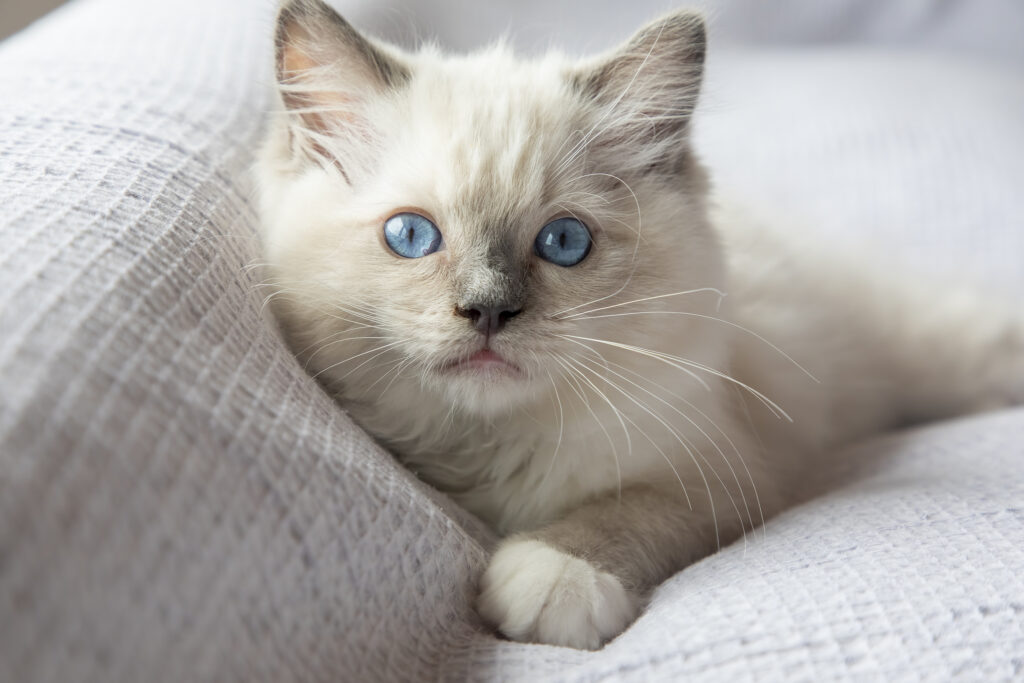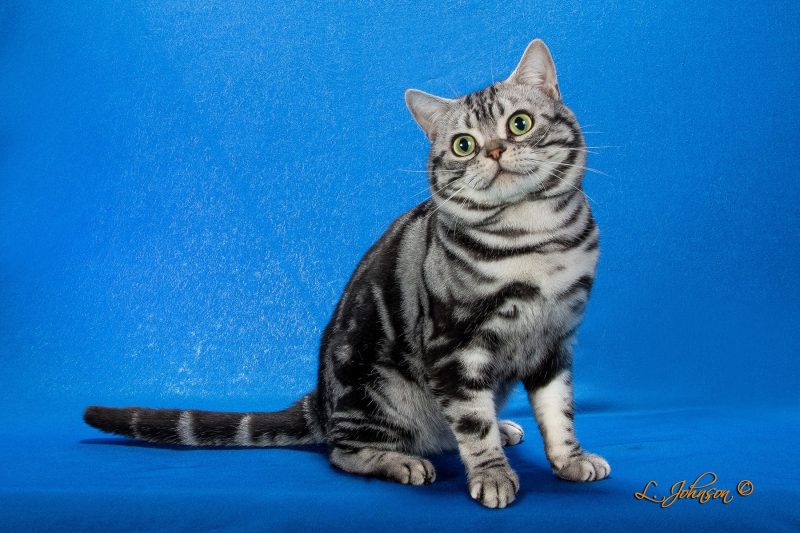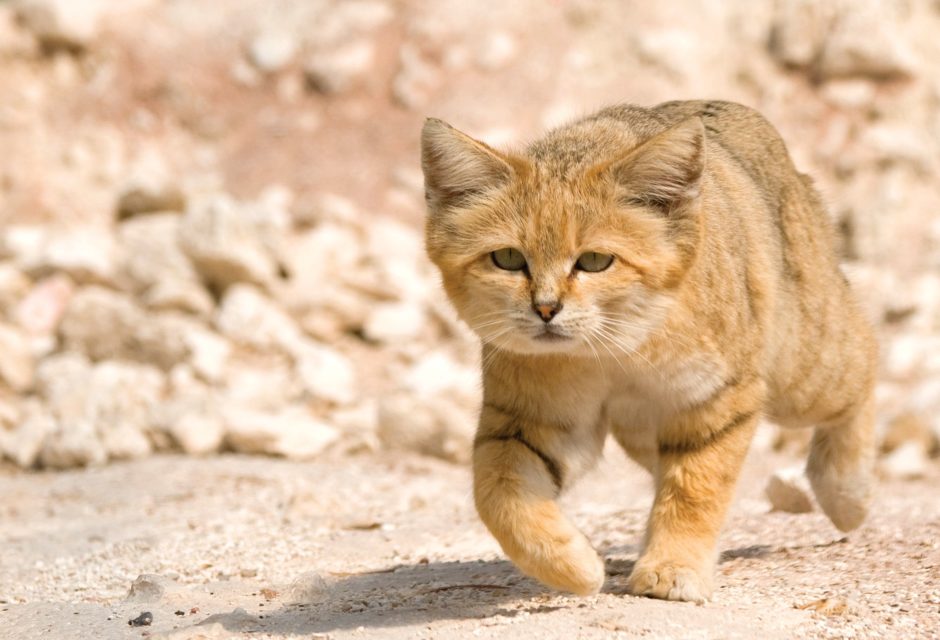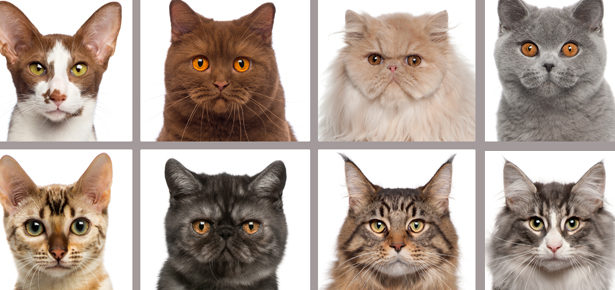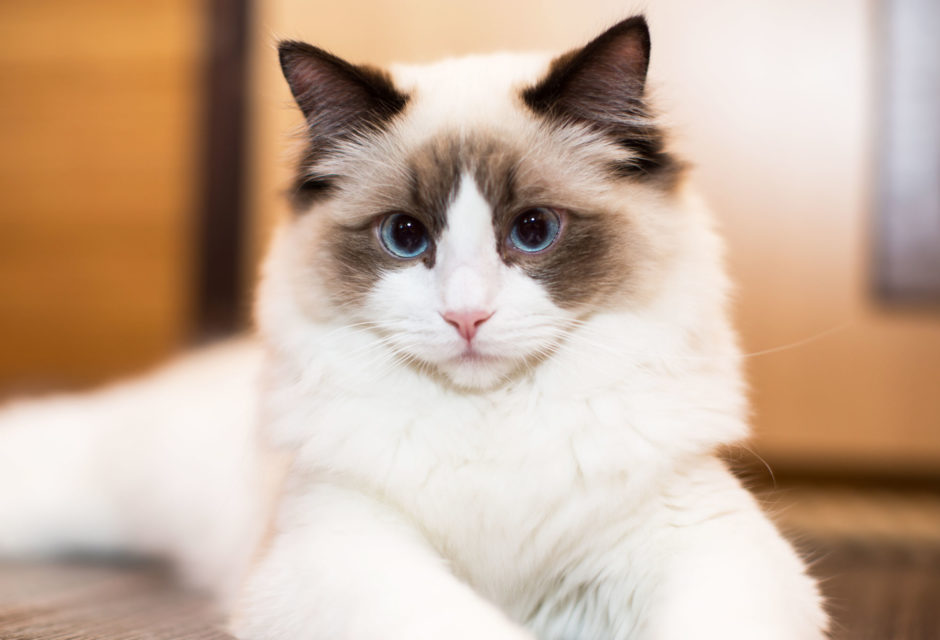

The Ragdoll Cat
Meet this laid-back cat with a great disposition
Ragdoll cats, true to their name, are known for their relaxed and “ragdoll-like” behaviour when picked up. This breed has a laid-back demeanor with a great disposition. With their people-oriented personality and affectionate nature, Ragdolls are a family favourite and keep Ragdoll aficionados coming back for more.
The Ragdoll is a fairly new breed that was developed by Ann Baker in the early 1960s. The International Cat Association (TICA) recognizes Josephine, Baker’s pure white longhaired cat, as the esteemed matriarch of the breed.
After Baker bred Josephine with other male cats she owned or found, she noticed that the offspring of Josephine had unique temperament traits that were very endearing. One of the most popular traits of the offspring was the relaxed nature of the cats when picked up, similar to the heaviness of a doll—this is where the “Ragdoll” nickname came from.

Photo: bigstock.com/Rawlik
Baker set up her own registry—the International Ragdoll Cat Association (IRCA)—and strict breeding standards were enforced.
In 1975, a group led by Denny Dayton broke rank with IRCA to gain mainstream attention for the Ragdoll. Dayton’s mission was a success; this group eventually developed the Ragdoll standard currently accepted by major cat registries.
Ragdoll Cat Description
The Ragdoll Look & Personality
Breeders are insistent on the description of the Ragdoll to be a blue-eyed and “pointed” breed. This means the body is lighter in colour than the points—the face, legs, tail, and ears.
But don’t let their regal looks fool you into thinking this is a stuffy breed. Most cats of the Ragdoll breed are very relaxed and docile and enjoy being around people.
“They love their people and they get along well with other dogs and cats,” says Sue Shorey, president of the Ragdoll Fanciers Club International (RFCI). In fact, according to the Cat Fanciers’ Association (CFA), many Ragdolls are very devoted to their owners and will even run to greet their people at the door.
Classic Ragdoll Cat Traits
The Ragdoll cat is known for its laid-back, affectionate personality and striking appearance. These cats are medium to large in size, with a sturdy, muscular build, and their soft, semi-long coat comes in various color patterns, including colorpoint, mitted, and bicolor. Their striking blue eyes are one of their most defining features, contributing to their captivating, almost “dreamy” expression.
One of the most notable traits of the Ragdoll is their incredibly relaxed and docile temperament. They are known to be “dog-like” in their loyalty and will often follow their owners around the house. They are affectionate, sociable, and thrive on human interaction. They tend to be good with children and other pets, making them excellent family companions.
Ragdolls are often described as “floppy” cats because they go limp when picked up, hence the breed’s name. This unique behavior is due to their relaxed muscle tone, which contributes to their gentle nature. They are not typically aggressive and enjoy being handled, often curling up in their owner’s lap or lying next to them.
Despite their calm demeanor, Ragdolls are playful and enjoy interactive games, though they tend to have a more laid-back approach compared to more active breeds. Grooming is relatively easy, as their coat doesn’t mat easily, though regular brushing is recommended to keep it looking its best.
Overall, the Classic Ragdoll’s friendly, easygoing nature and stunning appearance make them a cherished addition to any home.
Ragdoll Kittens
The point design that Ragdolls are known for isn’t evident at birth. Kittens are born pure white and start developing their colour within the first few weeks of life. Within two to three years, Ragdoll kitties will fully develop their colours.
What to Know Before Owning a Ragdoll Cat
Ragdoll Cat Social Needs
Ragdoll cats are well-known for their loving and friendly nature. It’s important to understand their social requirements to ensure a happy and fulfilling life. They truly enjoy interacting and being part of the family, often shadowing their owners around the house in search of attention and affection.
These cats can feel lonely easily and might get stressed or anxious if left alone for too long. If you have a busy schedule, it’s a good idea to think about adopting two Ragdolls or providing a lot of toys and enrichment to keep them busy while you’re away.
Ragdoll Cat Size, Grooming & Intelligence
The Ragdoll is a cat of medium to large build. On average, male Ragdolls range from 15 to 20 pounds; females usually range around 10 to 15 pounds.
Grooming requirements for Ragdolls are fairly minimal, as they do not possess a double coat. But rest assured, even without a double coat, their fur is soft and plush, with a silky touch. Despite their low-shedding coat, some people with allergies may still react to them. Spend time with one before bringing one home if allergies are a concern.
It’s also important to note that although this breed has a tendency to go limp when picked up, not every Ragdoll has this trait—especially playful kittens. But no matter if they have this trait or not, they always bring a smile to their owners’ faces with their even disposition.
Their intelligence also continues to amaze owners. According to Shorey, Ragdolls can learn their names when called, can be taught how to fetch, and learn what they are allowed to do (and not to do). “They don’t have that destructive trait to them,” Shorey says.
Ragdoll Cat Health
The Ragdoll did receive somewhat of a black eye from reports that said the breed was more prone to feline hypertrophic cardiomyopathy (HCM), a heart disease where areas of the heart muscle enlarge and thicken.
HCM is the most common heart disease in felines and an alarming trait of the disease is that a cat could seem healthy but will become seriously ill very quickly, or even die suddenly.
However, DNA tests have been developed in the past few years that can recognize the mutation, and it has helped Ragdoll breeders to take it out of the breed, so today HCM is not prevalent nor is the breed prone to any other specific health problems. It might be best for a Ragdoll cat to remain indoors, however. Because of their non-violent and relaxed nature, they could become victims to other outside cats or unpredictable elements.
What Makes Ragdoll Cats So Special?
The Pros and Cons of Owning a Ragdoll Cat
Bottom line? The Ragdoll is a great companion for a cat lover. They beg to give affection and attention to their owners—and they certainly love to get the same in return. Chill and docile, the Ragdoll is the perfect addition to a family wanting to maintain a relaxed vibe throughout the household.
>>If you like the Ragdoll, you might also like the Ragamuffin
Join the newsletter and never miss out on cat content again!
"*" indicates required fields
By clicking the arrow, you agree to our web Terms of Use and Privacy & Cookie Policy. Easy unsubscribe links are provided in every email.





